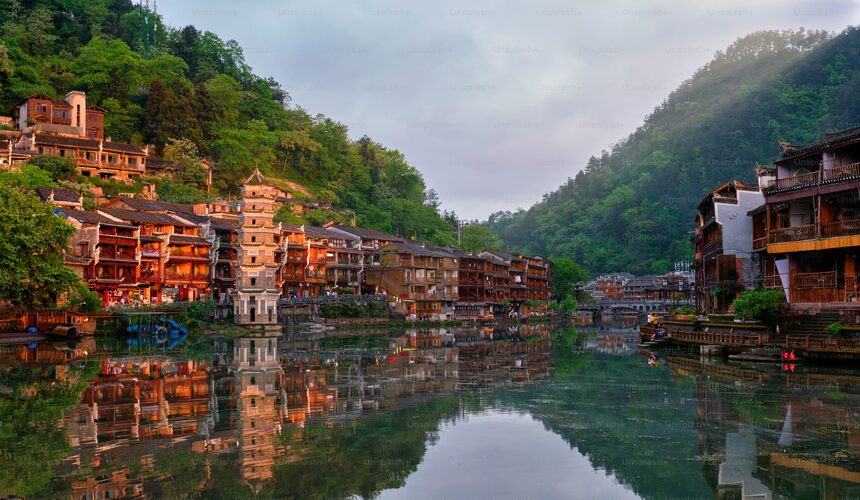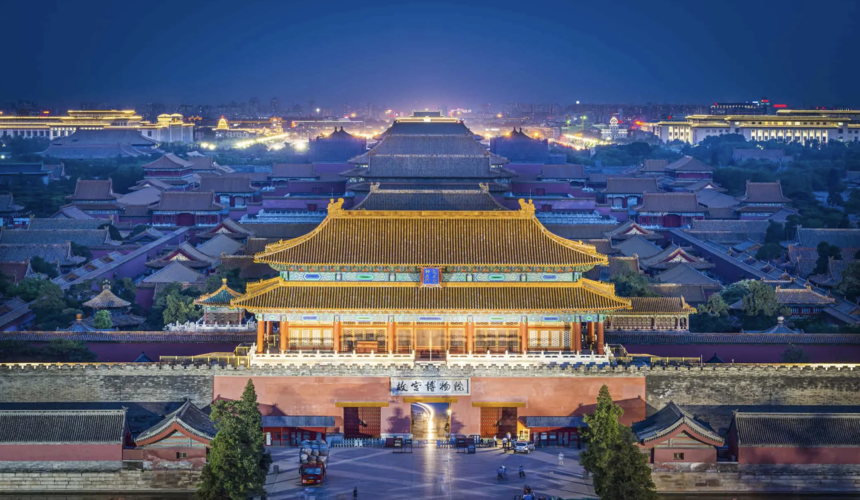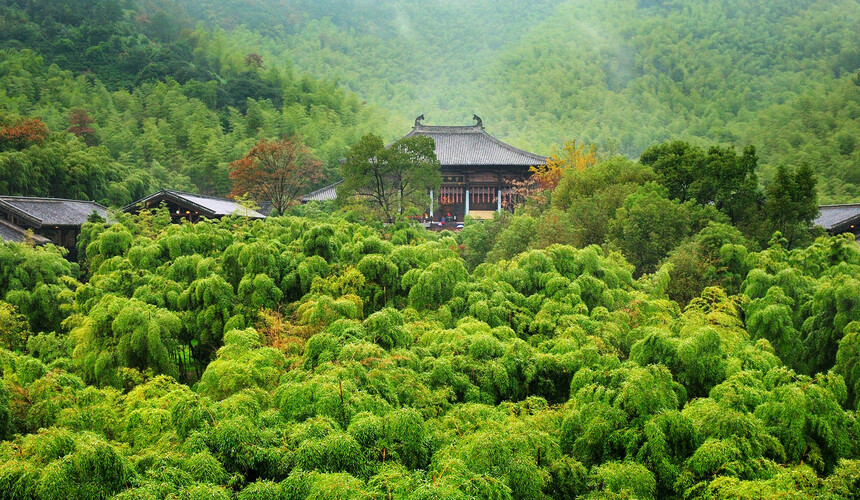
A Traveler’s Guide to the Best Bamboo Forests in China
China’s bamboo forests are features of its swaying green stalks, misty mountain air, and serene pathways that feel straight out of a dream. Beyond their beauty, they also symbolize resilience and harmony in Chinese tradition. If you are seeking a peaceful retreat, stunning photo opportunities, or a deeper connection with nature. China offers several breathtaking bamboo forests that are well worth the journey. In this guide, we’ll take you through the top destinations where you can experience the magic of bamboo in all its glory.
1. Shunan Bamboo Forest (Yibin City, Sichuan Province)
The Shunan Bamboo Forest is one of China’s most breathtaking natural wonders. It is the largest and concentrated scenic area of natural bamboo in the World. Apart from bamboo scenery, you can find mountains, lakes, waterfalls and ancient temples here. Riding on a cable car to trip over the bamboo forest or taking a bamboo rafting at Cinglong Lake is a must!
You can get on the Cable Car Rides to enjoy panoramic views of the bamboo sea. One spans 2,700 meters, providing a 30-minute scenic journey. Local cuisine features bamboo shoots and bamboo fungus. It is cooked in bamboo tubes or wrapped in bamboo leaves, offering a unique culinary experience
- Best Time to Visit: The ideal times are spring (March to May) and autumn (September to November). These seasons offer pleasant weather and vibrant natural colors.
- Getting There: Take a high-speed train to Yibin East Railway Station, then hire a taxi or take a local bus to the Shunan Bamboo Sea scenic area. The journey from Chengdu to Yibin typically takes about 5 hours by bus.
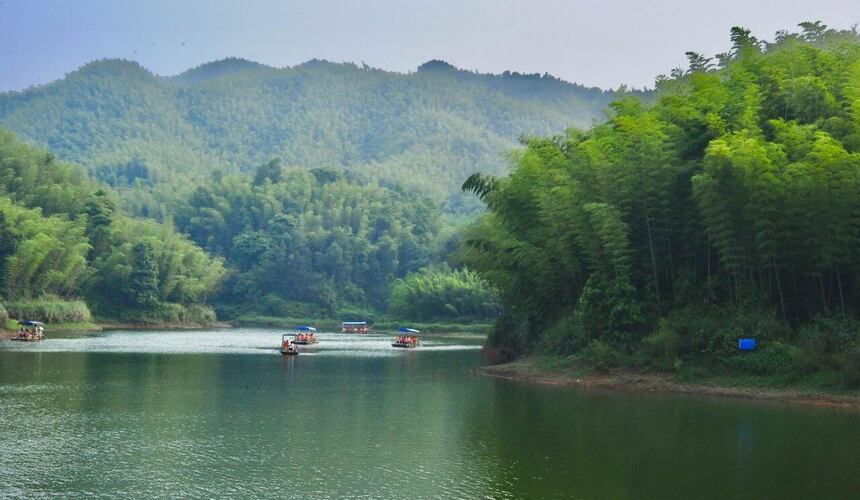
2. Anji Bamboo Sea (Huzhou City, Zhejiang Province)
If you are looking for a natural emerald bamboo world not far away from Shanghai, then visit Anji Bamboo Sea. Anji offers a glimpse into the rural life of China. The area has around 60,000 hectares of bamboo groves. Standing inside these soaring stalks of bamboo is like being in another world. Walk on a path through the lush green and let it lead you to an unknown place.
You can stroll along the Bamboo Sea Promenade. A scenic trail that meanders through the dense bamboo groves. Offer an immersive experience amidst towering stalks. Then go up to the Bamboo Tower to enjoy panoramic views of the expansive bamboo sea. Before ending the trip. Head to Wunu Lake. It is a tranquil lake nestled within the bamboo forest, providing a serene spot for relaxation.
- Best Time to Visit: It is nice for year-round. Spring is an ideal time for hiking and photography. Summer provides a cool retreat from the summer heat. Autumn has fewer crowds, offering a peaceful experience. Winter can immerse yourself in snow-dusted bamboo scenery.
- Getting There: Anji is a 2-hour drive from Hangzhou. A 3-hour drive from Shanghai. Regular bus services and guided tours are available from both cities.
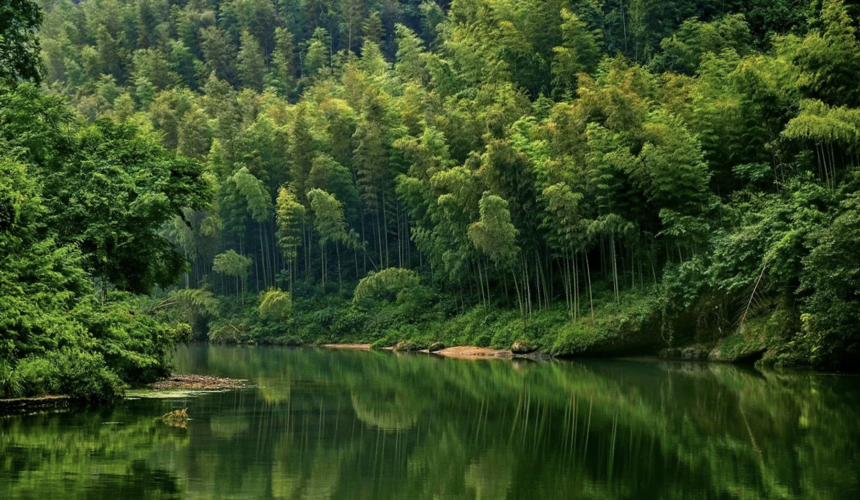
3. Yixing Bamboo Forest (Wuxi City, Jiangsu Province)
Yixing bamboo forest is a top choice for people who want to enjoy fresh air and leisure activities. You can try foods made from bamboo and have meals with bamboo bowls. Also, about 23 kilometers away from the forest is the Longchi Mountain scenic spot. You can discover a tea plantation while enjoying the tea.
The forest features well-maintained trails suitable for all levels. You can take a cable car halfway up the mountain to enjoy panoramic views of the bamboo expanse. Or hike up to the Yunu Peak. It is a place that can offer you breathtaking views of the landscape. For those seeking a more active exploration, cycling paths wind through the bamboo groves.
- Best Time to Visit: Spring is the best time to enjoy pleasant weather, while summer offers a refreshing escape. Autumn can admire the changing colors of the foliage.
- Getting There: Yixing is 90 minutes by bus from Wuxi. The forest is about a 3-hour drive from Shanghai.
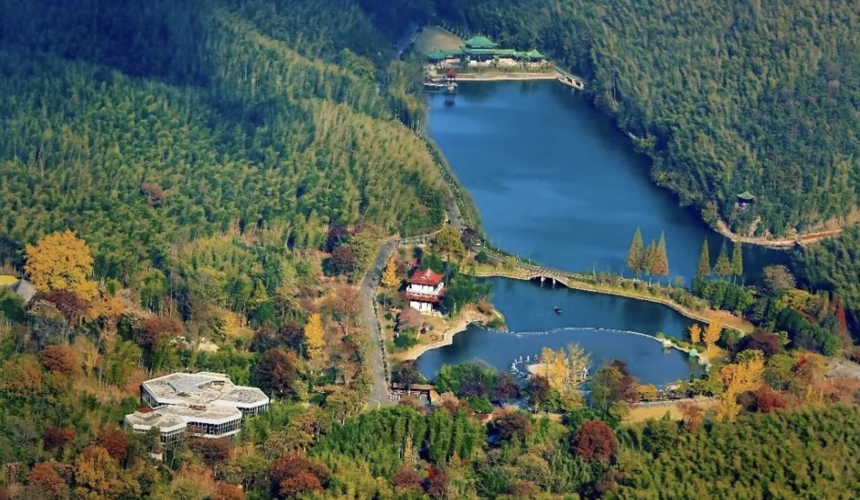
4. Chashan Bamboo Sea ( Yongchuan District, Chongqing)
This is the place where the movie “House of Flying Daggers” had its exterior shooting. There are three tea gardens and bamboo forests inside the scenic areas. Three major tea plantations within the park offer insights into traditional tea cultivation and processing techniques.
You can also watch tea shows, enjoy snacks, and tea in the China Tea Art Villa. Explore cultural landmarks such as Shuangfuyuan, Xianren Cave, and Tianbaozhai. Add historical depth to the natural beauty of the area. Therefore, this place makes it a unique destination for nature enthusiasts and cultural explorers.
Best Time to Visit: Spring is the time to witness the sprouting of new tea buds and bamboo shoots. Autumn is famous for the blooming of white flowers on tea trees.
Getting There: The Chashan Bamboo Sea is accessible via the Chengdu-Chongqing Ring Expressway (G93) and the Jiulongpo-Yongchuan Highway.
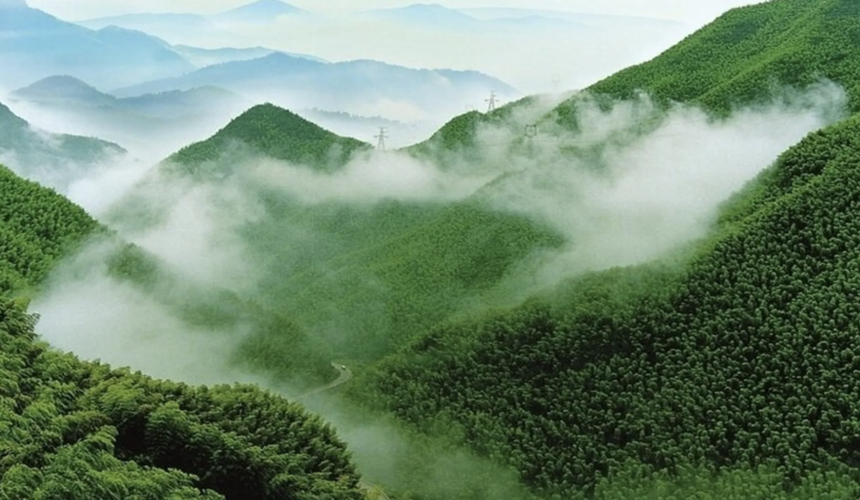
5. Chishui Bamboo Sea (Chishui City, Guizhou Province)
Chishui Bamboo Sea is located in Suoluo Nature Reserve, Guizhou. This place is special for its mesmerizing “sea” of green that stretches across rolling hills and beautiful lakes. More than 3,000 hectares of Nan bamboo blanket the mountains. Form a boundless expanse of green waves accompanied by fragrance.
The bamboo forest is not only a natural wonder but also a cultural treasure. It is the birthplace of single-bamboo drifting. A traditional sport where individuals balance and perform on floating bamboo poles. The region’s unique Danxia Landform provides a striking contrast to the lush greenery.
- Best Time to Visit: Spring is the ideal time for the fresh growth of bamboo shoots and blooming flora. In Autumn, you can witness the vibrant colors of the changing leaves and participate in local harvest festivals.
- Getting There: Chishui City is accessible via major transportation networks connecting Guizhou and neighboring provinces.

6. General Travel Tips for Visiting Bamboo Forests in China
- Wear Comfortable Footwear: Most bamboo forests feature walking trails, steps, and uneven terrain. Please remember to wear sturdy, non-slip shoes or hiking boots for safe exploration.
- Dress in Layers: Weather can vary significantly depending on elevation and season. Layer your clothing and carry a light rain jacket, especially in spring or summer.
- Pack Essentials: Sunscreen, hat, insect repellent, refillable water bottle, and portable snacks.
- Avoid Crowds: You can consider visiting on weekdays or early mornings. Try to avoid during holidays like the Chinese New Year or Golden Week.
- Follow Local Signs and Guides: Some forests are located in rural areas, may lack English signage. It is suggested to hire a local guide or use translation apps to enhance your experience.
- Stay Connected: Download maps offline and have essential Chinese phrases handy. In remote areas, internet signals can be weak, so plan accordingly.
- Try the Local Bamboo Cuisine: Don’t miss out on dishes made from fresh bamboo shoots. They are a regional specialty in many bamboo forest areas.
- Respect Nature: Do not pick bamboo. Please don’t create litter or damage the trails. Stick to marked paths to protect the environment and avoid getting lost.
- Plan Your Transport in Advance: Some bamboo forests are located in mountainous or remote regions. Arrange transportation ahead of time, and check if shuttle buses or cable cars are available within the park.
China’s breathtaking bamboo forests offer more than just stunning scenery. They provide a serene escape into nature, rich cultural encounters, and unforgettable adventures. Ready to experience it all for yourself? Book your customized bamboo forest tour with our expert travel consultants today! Let us help you craft a seamless itinerary tailored to your interests.


